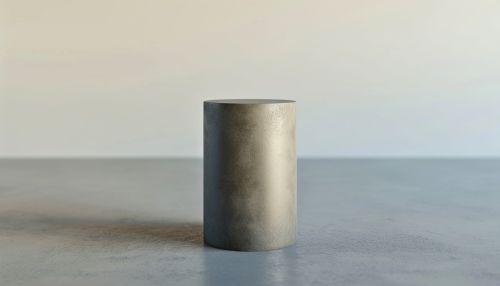Cylinder (geometry)
Definition and Basics
A cylinder in geometry is a three-dimensional solid that is very common in everyday life. The mathematical definition of a cylinder is a surface consisting of all the lines (called generators) that are parallel to a given line and pass through a given plane curve. The solid enclosed by this surface and by two planes perpendicular to the axis is also called a cylinder. The surface, in this context, is known as a cylindrical surface.
Mathematical Description
In mathematics, a cylinder is traditionally defined as a surface formed by the points at a fixed distance from a given straight line, the axis of the cylinder. The solid enclosed by this surface and by two planes perpendicular to the axis is also called a cylinder. The surface area and the volume of a cylinder have been known since deep antiquity.
In differential geometry, a cylinder is defined more broadly as any ruled surface spanned by a one-parameter family of parallel lines. A cylinder whose cross section is an ellipse, parabola, or hyperbola is called an elliptic, parabolic, or hyperbolic cylinder, respectively.
Surface Area and Volume
The surface area of a cylinder can be found by breaking it down into three parts: The top, the bottom, and the body. The area of the top and bottom circles is given by πr², and the area of the body that wraps around the cylinder is given by 2πrh. Thus, the total surface area of a cylinder is 2πr(h + r).
The volume of a cylinder is given by the base area multiplied by the height. Since the base is a circle, area of the base is given by πr². Therefore, the volume of the cylinder is πr²h.
Cylindrical Coordinate System
In mathematics, the cylindrical coordinate system is a three-dimensional coordinate system that specifies point positions by the distance from a chosen reference axis, the direction from the axis relative to a chosen reference direction, and the distance from a chosen reference plane perpendicular to the axis. The latter distance is given as a positive or negative number depending on which side of the reference plane faces the point.
The cylindrical coordinate system is especially useful in physics and engineering. For example, it is used in fluid dynamics and in the calculation of the electric and magnetic fields of cylindrical symmetry.
Cylinders in Real Life
Cylinders are very common in everyday life. They are found in cans, tubes, barrels, and many other objects. In addition, cylinders are used in a variety of scientific and mathematical applications. For example, they are used in the design of nuclear reactors, in the study of fluid dynamics, and in the development of advanced materials.


